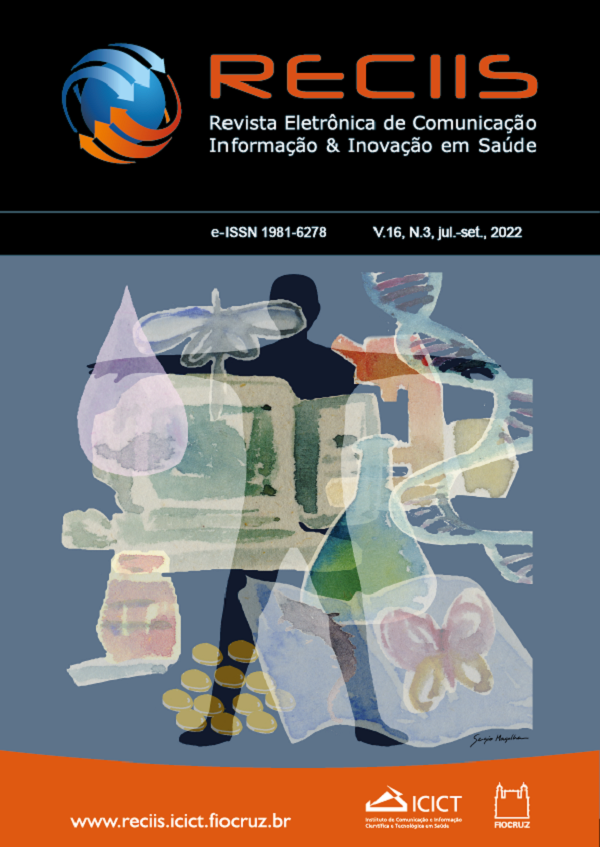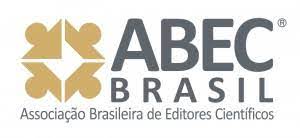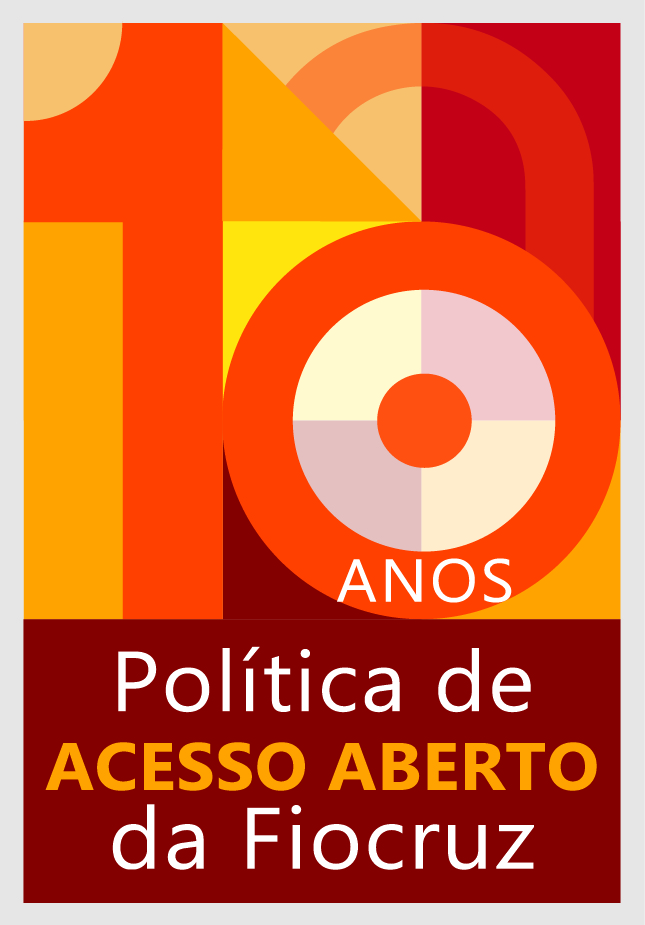Uso del cómic como herramienta para difundir conocimientos sobre Anisakis spp. y formas de prevenir la anisakiasis, en un evento de divulgación científica
DOI:
https://doi.org/10.29397/reciis.v16i3.2461Palabras clave:
Analfabetismo científico, Enseñanza de las ciencias, Popularización de la ciencia, Parásito de peces, Urban sketchingResumen
Las narrativas visuales, como los cómics, son herramientas populares que pueden contribuir a la educación científica y la comunicación para diferentes públicos. Dentro de esta perspectiva, este trabajo discute el uso de las historietas en la difusión del conocimiento sobre la seguridad alimentaria de los peces en un evento de divulgación científica. Para la ocasión, se creó una historia, que enfatizó el concepto de Anisakis spp. y las metodologías para la prevención de la anisakiasis. La trama involucró a participantes de todas las edades, lo que sugiere fuertemente que los cómics son cautivadores y funcionan como una herramienta de aprendizaje, que puede contribuir a la alfabetización científica de la población, lo que lleva a la promoción de la salud a los niveles individual y colectivo. Se destaca aquí la importancia de producir nuevos conocimientos, lo que amplía el diálogo entre las áreas de la salud, la ciencia y la tecnología con la sociedad, además, es urgente incrementar las inversiones y promover la formación avanzada y continua de los divulgadores de la ciencia.
Citas
AFONSO, Emília da Glória Moreira. A divulgação científica para o grande público:o papel das relações públicas – o caso do CIIMAR. 2008. 120 f. Dissertação (Mestrado em Ciências da Comunicação) – Universidade Fernando Pessoa, Porto, 2008. Disponível em: https://bdigital.ufp.pt/bitstream/10284/1056/2/emiliaafonso.pdf. Acesso em: 04 jan. 2022.
AIBINU, Ibukun E.; SMOOKER, Peter M.; LOPATA, Andreas L. Anisakis nematodes in fish and shellfish-from infection to allergies. International Journal for Parasitology: Parasites and Wildlife, Nova York, v. 9, p. 384-393, 2019. DOI: https://doi.org/10.1016/j.ijppaw.2019.04.007. Disponível em: https://www.sciencedirect.com/science/article/pii/S2213224419300021?via%3Dihub. Acesso em: 04 jan. 2022.
ALBAGLI, Sarita. Divulgação científica: informação científica para cidadania? Ciência da Informação, Brasília, DF, v. 25, n. 3, p. 396-404, 1996. Disponível em: https://revista.ibict.br/ciinf/article/view/639/643. Acesso em: 04 jan. 2022.
ALEIXO, Paul; NORRIS, Claire. The comic book textbook. Education and Health, Exeter, v. 28, n. 4, p. 72-74, 2010.AMARAL, Sara Varela et al. I want more and better cells! – an outreach project about stem cells and its impact on the general population. PloS One, São Francisco, v. 10, n. 7, p. e0133753, 2015. DOI: https://doi.org/10.1371/journal.pone.0133753. Disponível em: https://journals.plos.org/plosone/article?id=10.1371/journal.pone.0133753. Acesso em: 04 jan. 2022.
AUDICANA, Maria Teresa; KENNEDY, Malcolm W. Anisakis simplex: from obscure infectious worm to inducer of immune hypersensitivity. Clinical Microbiology Reviews, [Washington, DC], v. 21, n. 2, p. 360-379, 2008.DOI: https://doi.org/10.1128/CMR.00012-07. Disponível em: https://journals.asm.org/doi/full/10.1128/CMR.00012-07. Acesso em: 04 jan. 2022.
AUDICANA, Maria Teresa et al. Anisakis simplex: dangerous – dead and alive? Trends in Parasitology, Oxford, v. 18, n. 1, p. 20-25, 2002. DOI: https://doi.org/10.1016/S1471-4922(01)02152-3. Disponível em: https://www.sciencedirect.com/science/article/pii/S1471492201021523. Acesso em: 04 jan. 2022.
BAO, Miguel et al. Human health, legislative and socioeconomic issues caused by the fish-borne zoonotic parasite Anisakis: challenges in risk assessment. Trends in Food Science & Technology, [s.l.], v. 86, p. 298-310, 2019. DOI: https://doi.org/10.1016/j.tifs.2019.02.013. Disponível em: https://www.sciencedirect.com/science/article/pii/S0924224418306137?via%3Dihub. Acesso em: 15 dez. 2021.
BARATA, Germana. Em revisão: o impacto da produção científica brasileira para o Brasil. Ciência e Cultura, São Paulo, v. 67, n. 4, p. 06-08, 2015. DOI: http://dx.doi.org/10.21800/2317-66602015000400003. Disponível em: http://cienciaecultura.bvs.br/scielo.php?script=sci_arttext&pid=S0009-67252015000400003&lng=pt&tlng=pt. Acesso em: 10 dez. 2021.
BARRON, James. AIDS message in a subway comic strip; New York City Health Agency teaches about the disease in a soap with a sober focus. TheNew York Times, v. 9, p. 1, 1993. Section B. Disponível em: https://www.nytimes.com/1993/11/09/nyregion/aids-message-subway-comic-strip-new-york-city-health-agency-teaches-about.html. Acesso em: 10 ago. 2021.
BODISON, Stefanie C. et al. Engaging the community in the dissemination, implementation, and improvement of health‐related research. Clinical and Translational Science, Malden, v. 8, n. 6, p. 814-819, 2015.DOI: https://doi.org/10.1111/cts.12342. Disponível em: https://ascpt.onlinelibrary.wiley.com/doi/full/10.1111/cts.12342. Acesso em: 10 dez. 2021.
BUENO, Wilson Costa. Comunicação cientifica e divulgação científica: aproximações e rupturas conceituais. Informação & Informação, Londrina, v. 15, n. 1 esp., p. 1-12, 2010. Disponível em: https://www.pbcib.com/index.php/pbcib/article/view/11932. Acesso em: 04 set. 2022.
BUENO, Wilson Costa. Jornalismo científico: conceitos e funções. Ciência e cultura, Campinas, v. 37, n. 9, p. 1420-1427, 1985. Disponível em: https://biopibid.ccb.ufsc.br/files/2013/12/Jornalismo-cient%C3%ADfico-conceito-e-fun%C3%A7%C3%A3o.pdf. Acesso em: 10 dez. 2021.
CAETANO, Karina et al. Desafios para o trabalho da disseminação científica em saúde pública em contexto de disseminação do coronavírus. Revista Eletrônica de Comunicação, Informação & Inovação em Saúde, Rio de Janeiro, v. 15, n. 1, p. 233-248, 2021. DOI: https://doi.org/10.29397/reciis.v15i1.2202. Disponível em: https://www.reciis.icict.fiocruz.br/index.php/reciis/article/view/2202. Acesso em: 05 jan. 2022.
CALDEIRA, Andreia Juliana Rodrigues; ALVES, Carla Patrícia Pereira; SANTOS, Maria João. Anisakisnotification in fish: an assessment of the cases reported in the European Union Rapid Alert System for Food and Feed (RASFF) database. Food Control, [s. l.], v. 124, p. 107913, 2021. DOI: https://doi.org/10.1016/j.foodcont.2021.107913. Disponível em: https://www.sciencedirect.com/science/article/abs/pii/S0956713521000517?via%3Dihub. Acesso em: 10 dez. 2021.
CALDEIRA, Andreia Juliana Rodrigues; ARAÚJO, Renata Borges; SANTOS, Maria João. É seguro consumir pescado cru? Uma perspectiva sobre a ocorrência de Anisakis spp. em produtos de pesca. Revista Anápolis Digital, Anápolis, v. 12, n. 3, p. 41-60, 2020. DOI: https://doi.org/10.5281/zenodo.5218667. Disponível em: https://zenodo.org/record/5218667#.YuFdz3bMKM8. Acesso em: 15 dez. 2021.
CARTER, Henry A. Chemistry in the comics: Part 1. A survey of the comic book literature. Journal of Chemical Education, v. 65, n. 12, p. 1029, 1988. DOI: https://doi.org/10.1021/ed065p1029. Disponível em: https://pubs.acs.org/doi/abs/10.1021/ed065p1029. Acesso em: 10 dez. 2021.
CARVALHO, Mariana Freitas Canielo de; MATEUS, Cristielle Andrade. Fake news e desinformação no meio digital: análise da produção científica sobre o tema na área de ciência da informação. Múltiplos Olhares em Ciência da Informação, Belo Horizonte, v. 8, n. 2, p. 1-13, 2018. Número especial EREBD. Disponível em: https://periodicos.ufmg.br/index.php/moci/article/view/16901/13660. Acesso em: 10 dez. 2021.
CASTRO, Paola de et al. Dissemination of public health information: key tools utilised by the NECOBELAC network in Europe and Latin America. Health Information and Libraries Journal, [s. l.], v. 29, n. 2, p. 119-130, 2012.DOI: https://doi.org/10.1111/j.1471-1842.2012.00977.x. Disponível em: https://onlinelibrary.wiley.com/doi/10.1111/j.1471-1842.2012.00977.x. Acesso em: 10 dez. 2021.
CAVALCANTI, Cecilia C. B.; PERSECHINI, Pedro Muanis. Museus de Ciência e a popularização do conhecimento no Brasil. Field Actions Science Reports, [s. l.], n. 3, p. 1-10, 2011. Disponível em: https://journals.openedition.org/factsreports/1085. Acesso em: 10 dez. 2021.
COHN, Neil. Your brain on comics: a cognitive model of visual narrative comprehension. Topics in Cognitive Science, [Hoboken], v. 12, n. 1, p. 352-386, 2020.DOI: https://doi.org/10.1111/tops.12421. Disponível em: https://onlinelibrary.wiley.com/doi/10.1111/tops.12421. Acesso em: 10 dez. 2021.
DALLARI, Sueli Gandolfi. O negócio da falsa ciência e o amplo acesso ao conhecimento científico. Revista de Direito Sanitário, São Paulo, v. 19, n. 2, p. 7-13, 2018. DOI: https://doi.org/10.11606/issn.2316-9044.v19i2p7-13. Disponível em: https://www.revistas.usp.br/rdisan/article/view/152560. Acesso em: 04 jan. 2022.
D’AMICO, Priscilla et al. Evolution of the Anisakis risk management in the European and Italian context. Food Research International, v. 64, p. 348-362, 2014.DOI: https://doi.org/10.1016/j.foodres.2014.06.038. Disponível em: https://www.sciencedirect.com/science/article/pii/S0963996914004438. Acesso em: 10 dez. 2021.
DECCACHE-MAIA, Eline; MESSEDER, Jorge Cardoso. O uso da arte como narrativa na abordagem CTS no ensino de ciências. Indagatio Didactica, Aveiro, v. 8, n. 1, p. 571-583, 2016. DOI: https://doi.org/10.34624/id.v8i1.3370. Disponível em: https://proa.ua.pt/index.php/id/article/view/3370. Acesso em: 10 dez. 2021.
DECCACHE-MAIA, Eline et al. Science popularization for preventing endemic diseases. Revista da Sociedade Brasileira de Medicina Tropical, Uberaba, v. 43, n. supl. 2, p. 18-23, 2010. Disponível em: https://www.arca.fiocruz.br/bitstream/icict/9869/2/Artigo%20Marcos%20Vannier%20%20final%202%20(1)%20(2).pdf. Acesso em: 10 dez. 2021.
DIAS, Gessy Ribeiro et al. Textos de divulgação científica como uma perspectiva para o ensino de matemática. Educação Matemática Pesquisa, São Paulo, v. 19, n. 2, p. 291-313, 2017. DOI: https://doi.org/10.23925/1983-3156.2017v19i2p291-313. Disponível em: https://revistas.pucsp.br/index.php/emp/article/view/31569. Acesso em: 04 jan. 2022.
EFSA PANEL ON BIOLOGICAL HAZARDS (BIOHAZ). Scientific opinion on risk assessment of parasites in fishery products. EFSA Journal, Parma, v. 8, n. 4, p. 1543, 2010. DOI: https://doi.org/10.2903/j.efsa.2010.1543. Disponível em: https://efsa.onlinelibrary.wiley.com/doi/abs/10.2903/j.efsa.2010.1543. Acesso em: 10 dez. 2021.
EILAM, Billie; POYAS, Yael. External visual representations in science learning: The case of relations among system components. International Journal of Science Education, [s. l.], v. 32, n. 17, p. 2335-2366, 2010.DOI: https://doi.org/10.1080/09500690903503096. Disponível em: https://www.tandfonline.com/doi/full/10.1080/09500690903503096. Acesso em: 04 jan. 2022.
EL-SETOUHY, M.A.; RIO, F. Stigma reduction and improved knowledge and attitudes towards filariasis using a comic book for children. Journal of the Egyptian Society of Parasitology, v. 33, n. 1, p. 55-65, 2003.Disponível em: https://europepmc.org/article/med/12739801. Acesso em: 10 dez. 2021.
FARINELLA, Matteo. The potential of comics in science communication. Journal of Science Communication, Trieste, v. 17, n. 1, p. Y01, 2018.DOI: https://doi.org/10.22323/2.17010401. Disponível em: https://jcom.sissa.it/sites/default/files/documents/JCOM_1701_2018_Y01.pdf. Acesso em: 10 dez. 2021.
FIORENZA, Evan A. et al. It’s a wormy world: meta‐analysis reveals several decades of change in the global abundance of the parasitic nematodes Anisakis spp. and Pseudoterranova spp. in marine fishes and invertebrates. Global Change Biology, Oxford, v. 26, n. 5, p. 2854-2866, 2020. DOI: https://doi.org/10.1111/gcb.15048. Disponível em: https://onlinelibrary.wiley.com/doi/10.1111/gcb.15048. Acesso em: 10 dez. 2021.
FREY, Nancy; FISHER, Douglas (ed.). Teaching visual literacy: using comic books, graphic novels, anime, cartoons, and more to develop comprehension and thinking skills. [Thousand Oaks]: Corwin Press, 2008. Disponível em: https://books.google.com.br/books?hl=pt-BR&lr=&id=cb4xcSFkFtsC&oi=fnd&pg=PR7&dq=Teaching+Visual+Literacy:+Using+Comic+Books,+Graphic+Novels,+Anime,+Cartoons,+and+More+to+Develop+Comprehension+and+Thinking+Skills&ots=EzBKuULJs8&sig=0vTMkVpvXrrUiOZR-p0ekSx6SIQ&redir_esc=y#v=onepage&q=Teaching%20Visual%20Literacy%3A%20Using%20Comic%20Books%2C%20Graphic%20Novels%2C%20Anime%2C%20Cartoons%2C%20and%20More%20to%20Develop%20Comprehension%20and%20Thinking%20Skills&f=false. Acesso em: 10 dez. 2021.
GERMANO, Marcelo Gomes; KULESZA, Wojciech Andrzej. Popularização da ciência: uma revisão conceitual. Caderno Brasileiro de Ensino de Física, Florianópolis, v. 24, n. 1, p. 7-25, 2007. Disponível em: https://periodicos.ufsc.br/index.php/fisica/article/view/1546. Acesso em: 04 jan. 2022.
GRANADO, António; MALHEIROS, José Vítor. Cultura científica em Portugal. Lisboa: Fundação Francisco Manuel dos Santos, 2015. Disponível em: https://run.unl.pt/bitstream/10362/122167/1/cultura_cientifica_em_portugal.pdf. Acesso em: 10 dez. 2021.
GUARDONE, Lisa et al. Human anisakiasis in Italy: a retrospective epidemiological study over two decades. Parasite, Paris, v. 25, p. 1-21, 2018. Article 41. DOI: https://doi.org/10.1051/parasite/2018034. Disponível em: https://www.parasite-journal.org/articles/parasite/full_html/2018/01/parasite180054/parasite180054.html. Acesso em: 04 jan. 2022.
HOCHBERG, Natasha S et al.Anisakidosis: perils of the deep. Clinical Infectious Diseases, Chicago, v. 51, n. 7, p. 806-812, 2010.DOI: https://doi.org/10.1086/656238. Disponível em: https://academic.oup.com/cid/article/51/7/806/354398. Acesso em: 10 dez. 2021.
HOSLER, Jay; BOOMER, K. B. Are comic books an effective way to engage nonmajors in learning and appreciating science? CBE – Life Sciences Education, Bethesda, v. 10, n. 3, p. 309-317, 2011. DOI: https://doi.org/10.1187/cbe.10-07-0090. Disponível em: https://www.lifescied.org/doi/10.1187/cbe.10-07-0090. Acesso em: 10 dez. 2021.
JEE, Benjamin D.; ANGGORO, Florencia K. Comic cognition: exploring the potential cognitive impacts of science comics. Journal of Cognitive Education and Psychology, [s. l.], v. 11, n. 2, p. 196-208, 2012.DOI: https://doi.org/10.1891/1945-8959.11.2.196. Disponível em: https://connect.springerpub.com/content/sgrjcep/11/2/196. Acesso em: 10 dez. 2021.
KAKALIOS, James. The physics of superheroes. Nova York: Avery, 2009.
KEMPER, Alessandra; ZIMMERMANN, Erika; GASTAL, Maria Luiza. Textos populares de divulgação científica como ferramenta didático-pedagógica: o caso da evolução biológica. Revista Brasileira de Pesquisa em Educação em Ciências, v. 10, n. 3, p. 25-50, 2010. Disponível em: https://periodicos.ufmg.br/index.php/rbpec/article/view/4086/2650. Acesso em: 10 dez. 2021.
KEOGH, Brenda; NAYLOR, Stuart; WILSON, Catherine. Concept cartoons: a new perspective on physics education. Physics Education, [s. l.], v. 33, n. 4, p. 219-224, 1998. DOI: https://doi.org/10.1088/0031-9120/33/4/009. Disponível em: https://iopscience.iop.org/article/10.1088/0031-9120/33/4/009. Acesso em: 04 jan. 2022.
LIN, Shu-Fei et al. Are science comics a good medium for science communication? The case for public learning of nanotechnology. International Journal of Science Education, Part B, [s. l.], v. 5, n. 3, p. 276-294, 2015. DOI: https://doi.org/10.1080/21548455.2014.941040. Disponível em: https://www.tandfonline.com/doi/full/10.1080/21548455.2014.941040. Acesso em: 10 dez. 2021.
LLARENA-REINO, María et al. Horizon scanning for management of emerging parasitic infections in fishery products. Food Control, [s. l.], v. 49, p. 49-58, 2015. DOI: https://doi.org/10.1016/j.foodcont.2013.09.005. Disponível em: https://bit.ly/338cNKT. Acesso em: 04 jan. 2022.
LORDÊLO, Fernanda Silva; PORTO, Cristiane de M. Divulgação científica e cultura científica: conceito e aplicabilidade. Revista Ciência em Extensão, São Paulo, v. 8, n. 1, p. 18-34, 2012. Disponível em: https://ojs.unesp.br/index.php/revista_proex/article/view/515/632. Acesso em: 10 dez. 2021.
MACHADO, Flávia Sílvia. A divulgação científica e o enunciado digital. Bakhtiniana: Revista de Estudos do Discurso, São Paulo, v. 11, n. 2, p. 93-110, 2016. DOI: https://doi.org/10.1590/2176-457323524. Disponível em: https://www.scielo.br/j/bak/a/8KBkTcRCtqrhjZtQmWvF5SQ/?lang=pt. Acesso em: 10 dez. 2021.
MACÍAS-CHAPULA, César A. Diseño de un modelo conceptual sobre la transferencia de resultados de investigación en salud pública en Honduras. Salud Pública de México, Morelos, v. 54, n. 6, p. 624-631, 2012. Disponível em: https://www.medigraphic.com/pdfs/salpubmex/sal-2012/sal126h.pdf. Acesso em: 10 dez. 2021.
MACÍAS-CHAPULA, César A. Hacia un modelo de comunicación en salud pública en América Latina y el Caribe. Revista Panamericana de Salud Pública, Washington, DC, v. 18, n. 6, p. 427-438, 2005. Disponível em: https://www.scielosp.org/pdf/rpsp/2005.v18n6/427-438/es. Acesso em: 10 dez. 2021.
MAIA, Bárbara Ávila; MASSARANI, Luisa. Os cientistas e os meios de comunicação de massa: um estudo de caso no Instituto Oswaldo Cruz. Revista Eletrônica de Comunicação, Informação e Inovação em Saúde, Rio de Janeiro, v. 11, n. 4, p. 1-15, 2017. DOI: https://doi.org/10.29397/reciis.v11i4.1342. Disponível em: https://www.reciis.icict.fiocruz.br/index.php/reciis/article/view/1342. Acesso em: 10 dez. 2021.
MATTIUCCI, Simonetta et al. Distribution of Anisakis larvae, identified by genetic markers, and their use for stock characterization of demersal and pelagic fish from European waters: an update. Journal of Helminthology, [s. l.], v. 81, n. 2, p. 117-127, 2007.DOI: https://doi.org/10.1017/S0022149X07754718. Disponível em: https://www.cambridge.org/core/journals/journal-of-helminthology/article/abs/distribution-of-anisakis-larvae-identified-by-genetic-markers-and-their-use-for-stock-characterization-of-demersal-and-pelagic-fish-from-european-waters-an-update/FCB7CDAE8FED3DF169F83076A7D34766. Acesso em: 04 jan. 2022.
MATTIUCCI, Simonetta et al. Molecular epidemiology of Anisakis and anisakiasis: an ecological and evolutionary road map. Advances in Parasitology, Nova York, v. 99, p. 93-263, 2018. DOI: https://doi.org/10.1016/bs.apar.2017.12.001. Disponível em: https://www.sciencedirect.com/science/article/abs/pii/S0065308X17300593?via%3Dihub. Acesso em: 04 jan. 2022.
MATTIUCCI, Simonetta; D’AMELIO, Stefano. Anisakiasis. In: BRUSCHI, Fabrizio (ed.). Helminth infections and their impact on global public health. Vienna: Springer, 2014. p. 325-365. DOI: http://dx.doi.org/10.1007/978-3-7091-1782-8. Disponível em: https://link.springer.com/chapter/10.1007/978-3-7091-1782-8_11. Acesso em: 04 jan. 2022.
MATTIUCCI, Simonetta et al. Anisakiasis and gastroallergic reactions associated with Anisakis pegreffii infection, Italy. Emerging Infectious Diseases, Atlanta, v. 19, n. 3, p. 496-499, 2013. DOI: http://dx.doi.org/10.3201/eid1903.121017. Disponível em: https://wwwnc.cdc.gov/eid/article/19/3/12-1017_article. Acesso em: 04 jan. 2022.
MAYER, Richard E.; GALLINI, Joan K. When is an illustration worth ten thousand words? Journal of Educational Psychology, Washington, DC, v. 82, n. 4, p. 715-726, 1990. DOI: https://doi.org/10.1037/0022-0663.82.4.715. Disponível em: https://psycnet.apa.org/fulltext/1991-11731-001.html. Acesso em: 10 dez. 2021.
MAYER, Richard E. et al. A generative theory of textbook design: Using annotated illustrations to foster meaningful learning of science text. Educational Technology Research and Development, [s. l.], v. 43, n. 1, p. 31-41, 1995. DOI: https://doi.org/10.1007/bf02300480. Disponível em: https://link.springer.com/article/10.1007/BF02300480. Acesso em: 10 dez. 2021.
MUZUMDAR, Jagannath. An overview of comic books as an educational tool and implications for pharmacy. Innovations in Pharmacy, [s. l.], v. 7, n. 4, p. 1-12, 2016. DOI: https://doi.org/10.24926/iip.v7i4.463. Disponível em: https://pubs.lib.umn.edu/index.php/innovations/article/view/463. Acesso em: 10 dez. 2021.
NEGRETE, Aquiles. Constructing a comic to communicate scientific information about sustainable development and natural resources in Mexico. Procedia – Social and Behavioral Sciences, Nova York, v. 103, p. 200-209, 2013.DOI: https://doi.org/10.1016/j.sbspro.2013.10.327. Disponível em: https://www.sciencedirect.com/science/article/pii/S1877042813037725?via%3Dihub. Acesso em: 10 dez. 2021.
NORTH, Sterling. A national disgrace and a challenge to American patents. Childhood Education, Londres, v. 17, n. 2, p. 56-56, 1940. DOI: https://doi.org/10.1080/00094056.1940.10724519. Disponível em: https://www.tandfonline.com/doi/abs/10.1080/00094056.1940.10724519. Acesso em: 10 dez. 2021.OLIVEIRA, Antonio José Silva;
OLIVEIRA, Clóvis Bôsco Mendonça. Island of science laboratory: scientific divulgation with vector for popularization of science. International Journal of Advanced Engineering Research and Science, Jaipur, v. 7, n. 5, p. 10-16, 2020. DOI: https://dx.doi.org/10.22161/ijaers.75.2. Disponível em: https://ijaers.com/detail/island-of-science-laboratory-scientific-divulgation-with-vector-for-popularization-of-science/. Acesso em: 10 dez. 2021.
OLIVEIRA, Sara Mendonça Poubel de. Disseminação da informação na era das fake news. Múltiplos Olhares em Ciência da Informação, Belo Horizonte, v. 8, n. 2, p. 1-15, 2018. Número especial EREBD. Disponível em: https://periodicos.ufmg.br/index.php/moci/article/view/16878/13637. Acesso em: 10 dez. 2021.
PIRES, Patrícia Miguel Marques. Avaliação de eventos de divulgação de ciência num centro de investigação científica. 2016. 206 f. Dissertação (Mestrado em Comunicação de Ciência) – Faculdade de Ciências Sociais e Humanas, Universidade Nova de Lisboa, Lisboa, 2016. Disponível em: https://run.unl.pt/handle/10362/19881. Acesso em: 10 dez. 2021.
PORTO, Cristiane de Magalhães; MORAES, Danilo de Almeida. Divulgação científica independente na internet como fomentadora de uma cultura científica no Brasil: estudo inicial em alguns blogs que tratam de ciência. In: ENCONTRO DE ESTUDOS MULTIDISCIPLINARES EM CULTURA, 5., 27-29 maio 2009, Salvador. Anais [...]. Salvador: UFBA, 2009. Disponívelem:http://www.cult.ufba.br/enecult2009/19095.pdf. Acesso em: 10 dez. 2021.
PUTNAM, G. L.; YANAGISAKO, K. L. Skin cancer comic book: evaluation of a public educational vehicle. Cancer Detection and Prevention, [s. l.], v. 5, n. 3, p. 349-356, 1982. Disponível em: https://europepmc.org/article/med/7151069. Acesso em: 10 dez. 2021.RAMOS, Paula. Parasites in fishery products – Laboratorial and educational strategies to control. Experimental Parasitology, [s. l.], v. 211, p. 107865, 2020. DOI: https://doi.org/10.1016/j.exppara.2020.107865. Disponível em: https://www.sciencedirect.com/science/article/pii/S0014489419304084?via%3Dihub. Acesso em: 10 dez. 2021.
ROMANÍ, Franco et al. La divulgación científica en el campo de la salud pública. La experiencia del Instituto Nacional de Salud. Revista Peruana de Medicina Experimental y Salud Pública, Lima, v. 35, n. 3, p. 515-522, 2018. DOI: https://doi.org/10.17843/rpmesp.2018.353.3640. Disponível em: https://rpmesp.ins.gob.pe/index.php/rpmesp/article/view/3640. Acesso em: 10 dez. 2021.
SAGAN, Carl. O mundo assombrado pelos demônios:a ciência vista como uma vela no escuro. Sâo Paulo: Companhia das Letras, 2006.
SANCHEZ-CARRION, Mario et al. Computer system for the management and scientific divulgation of the “Universidad Nacional de Loja”. In: IBERIAN CONFERENCE ON INFORMATION SYSTEMS AND TECHNOLOGIES (CISTI), 13., 13-16 jun. 2018, Caceres. Proceedings [...]. [S. l.]: IEEE, 2018. p. 1-6. DOI: https://dx.doi.org/10.23919/CISTI.2018.8398637. Disponível em: https://ieeexplore.ieee.org/document/8398637. Acesso em: 10 dez. 2021.
SANTOS, Maria João; RANGEL, Luis Filipe; CALDEIRA, Andreia Juliana Rodrigues. Anisaquíase, uma zoonose subestimada globalmente, causada por Anisakis spp. Revista Anápolis Digital, Anápolis, v. 12, n. 3, p. 21-40, 2020. DOI: https://doi.org/10.5281/zenodo.5218634. Disponível em: https://bit.ly/3iwOVp4. Acesso em: 10 dez. 2021.
SANTOS, Maria João et al. Comparison of anisakid infection levels between two species of Atlantic mackerel (Scomber colias and S. scombrus) off the Atlantic Portuguese coast. Scientia Marina, Barcelona, v. 81, n. 2, p. 179-185, 2017.DOI: http://dx.doi.org/10.3989/scimar.04552.26A. Disponível em: https://scientiamarina.revistas.csic.es/index.php/scientiamarina/article/view/1711. Acesso em: 10 dez. 2021.
SCHALL, Virgínia. Science education and popularization of science in the biomedical area: its role for the future of science and of society. Memórias do Instituto Oswaldo Cruz, Rio de Janeiro, v. 95, suppl. I, p. 71-77, 2000. DOI: https://doi.org/10.1590/S0074-02762000000700014. Disponível em: https://www.scielo.br/j/mioc/a/ZyyjhMDgg8q34qyJ5BQkpjw/?lang=en. Acesso em: 10 dez. 2021.
SCHWARZ, Gretchen. Expanding literacies through graphic novels. The English Journal, Urbana, v. 95, n. 6, p. 58-64, 2006.DOI: https://doi.org/10.2307/30046629. Disponível em: https://www.jstor.org/stable/30046629. Acesso em: 10 dez. 2021.
SHORT, Jeremy C.; RANDOLPH-SENG, Brandon; McKENNY, Aaron F. Graphic presentation: an empirical examination of the graphic novel approach to communicate business concepts. Business and Professional Communication Quarterly, [s. l.], v. 76, n. 3, p. 273-303, 2013. DOI: https://doi.org/10.1177/1080569913482574. Disponível em: https://journals.sagepub.com/doi/10.1177/1080569913482574. Acesso em: 10 dez. 2021.
SONES, W. W. D. The comics and instructional method. The Journal of Educational Sociology, [s. l.], v. 18, n. 4, p. 232-240, 1944. DOI: https://doi.org/10.2307/2262696. Disponível em: https://www.jstor.org/stable/2262696. Acesso em: 10 dez. 2021.
SPIEGEL, Amy N. et al. Engaging teenagers with science through comics. Research in Science Education, [s. l.], v. 43, n. 6, p. 2309-2326, 2013. DOI: https://doi.org/10.1007/s11165-013-9358-x. Disponível em: https://link.springer.com/article/10.1007/s11165-013-9358-x. Acesso em: 10 dez. 2021.
SYMONS, Cynthia S.; JOHNSON, Blair T. The self-reference effect in memory: a meta-analysis. Psychological Bulletin, Washington, DC, v. 121, n. 3, p. 371-394, 1997. DOI: https://doi.org/10.1037/0033-2909.121.3.371. Disponível em: https://psycnet.apa.org/fulltext/1997-03609-003.html. Acesso em: 10 dez. 2021.
TATALOVIC, Mico. Science comics as tools for science education and communication: a brief, exploratory study. Journal of Science Communication, Trieste, v. 8, n. 4, p. A02, 2009.DOI: https://doi.org/10.22323/2.08040202. Disponível em: https://jcom.sissa.it/archive/08/04/Jcom0804(2009)A02. Acesso em: 10 dez. 2021.
VAN THIEL, P. H.; KUIPERS, F. C.; ROSKAM, R. T. A nematode parasitic to herring, causing acute abdominal syndromes in man. Tropical and Geographical Medicine, Amsterdã, v. 12, n. 2, p. 97-113, 1960. Disponível em: https://www.cabdirect.org/cabdirect/abstract/19612900442. Acesso em: 05 dez. 2021.
VERSACI, Rocco. How comic books can change the way our students see literature: one teacher’s perspective. The English Journal, [s. l.], v. 91, n. 2, p. 61-67, 2001.DOI: https://doi.org/10.2307/822347. Disponível em: https://www.jstor.org/stable/822347. Acesso em: 10 dez. 2021.
WEITKAMP, Emma; BURNET, Frank. The Chemedian brings laughter to the chemistry classroom. International Journal of Science Education, Londres, v. 29, n. 15, p. 1911-1929, 2007.DOI: https://doi.org/10.1080/09500690701222790. Disponível em: https://www.tandfonline.com/doi/full/10.1080/09500690701222790. Acesso em: 10 dez. 2021.
WERTHAM, Fredric. Seduction of the innocent. Nova York: Rinehart, 1954.WISEMAN, Richard et al. Hocus Pocus: using comics to promote skepticism about the paranormal. Journal of Science Communication, Trieste, v. 20, n. 2, p. A04, 2021. DOI: https://doi.org/10.22323/2.20020204. Disponível em: https://jcom.sissa.it/archive/20/02/JCOM_2002_2021_A04. Acesso em: 10 dez. 2021.
Descargas
Publicado
Cómo citar
Número
Sección
Licencia
Derechos de autor 2022 Revista Eletrônica de Comunicação, Informação e Inovação em Saúde

Esta obra está bajo una licencia internacional Creative Commons Atribución-NoComercial 4.0.
Derechos de autor: El autor retiene los derechos sobre su obra sin restricciones.
Derechos de reutilización: La Reciis adopta la Licencia Creative Commons, CC BY-NC atribución no comercial conforme la Política de Acceso Abierto al Conocimiento de la Fundación Oswaldo Cruz. Con esa licencia es permitido acceder, bajar (download), copiar, imprimir, compartir, reutilizar y distribuir los artículos, desde que para uso no comercial y con la citación de la fuente, confiriendo los debidos créditos de autoría y mención a la Reciis. En esos casos, ningún permiso es necesario por parte de los autores o de los editores.
Derechos de depósito de los autores/auto-archivado: Los autores son estimulados a realizar el depósito en repositorios institucionales de la versión publicada con el link de su artículo en la Reciis.












